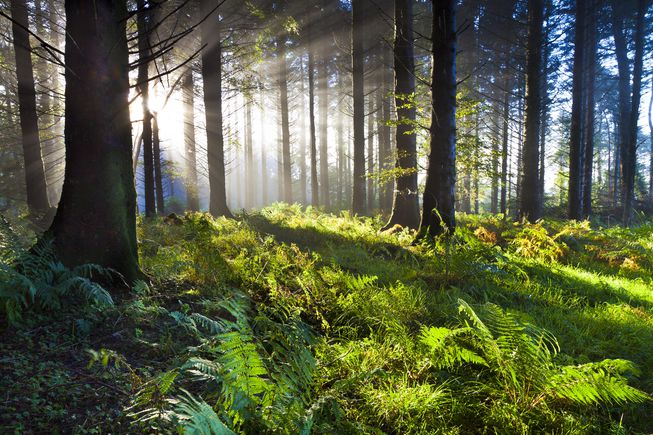
BLOG
How to grow an Oak tree.
We are an incredibly fortunate family to live in an urban setting with several large Oak Trees in our yard. One of the issues with this though is the astronomical amount of acorns that litter the ground every year. One thing I have always wanted to do was grow our own oak tree from one of those thousands of acorns that we crush underfoot year after year. So after several failed attempts we finally found some success! So here on Earth day, you should try your self and here are some instructions.
Collect acorns in early autumn. Acorns are best harvested in the early-to-mid autumn before they have fallen from the tree. Choose acorns that are free of worms, holes, and fungus. Suitable acorns should be brownish with slight tinges of green remaining, though the appearance of acorns can vary based on the type of oak tree they come from. A good general rule is that acorns are ready for picking when they can be removed from the cap without tearing them.
Note that the cap is not part of the acorn, but a (separate) protective covering. By removing the acorn from the cap you are not damaging it unless you tear the acorn itself.
If possible, look for suitable trees in the summer. You'll want mature trees whose acorns are easily-reached via a ladder or with a long pole.
Some oak varieties, like red oaks, have acorns that take two years to mature, rather than one. As you pick suitable trees in the summer, keep this in mind - the acorns on some oaks will be ready in the fall, while others won't be ready until the following year.
2. Perform a "float test." Put the acorns that you've harvested, without caps, in a bucket of water. Allow the acorns to settle a minute or two. Discard any acorns that float - these acorns are bad.
An acorn may float because a worm or grub has burrowed into it, creating an air hole. Similarly, a fungus can make the acorn float.
If, at any point, you notice that an acorn is soft to the touch, discard it as well. Soft, mushy acorns are rotten.
3. Hibernate the remaining acorns. Take the "good" acorns out of the water and dry them off. Place them in a large zipper bag with damp sawdust, vermiculite, peat mix, or another growth medium that can hold moisture. You should be able to fit up to 250 acorns in especially large bags. Put the bag in the refrigerator for a month and a half or longer - as long as it is needed to germinate the new oak.
This process is known as stratification, which is simply exposing the seed to cold temperatures, mimicking the natural conditions that seed would experience had it fallen to the ground. This primes the seed for sprouting in the spring.
Periodically check on your acorns. The medium should be just barely moist. Too moist, and the acorns may rot. Too dry, and they may not grow.
4. Keep an eye on the growth of your acorns. Even when stored in the refrigerator, most acorns will begin to germinate in the presence of moisture. The root end may begin to crack through the shell around early December (late fall, early winter). Whether or not the root has cracked through, the acorn is ready to be planted after about 40-45 days of storage.
Handle your seedlings with care - the emerging roots are easily damaged.
5. Plant each acorn in a pot or container. Obtain fairly small 2 inches (5 cm) diameter gardening pots (or, if you prefer, large styrofoam cups or milk cartons), for your plants. Fill these with a good quality potting soil (some sources also recommend adding milled sphagnum moss). For watering purposes, leave about an inch (2.5 centimeters) of space at the top. Plant your acorn just below the surface with the root facing down.
If using a styrofoam cup or milk carton, poke holes in the sides of the cup near the bottom so that water can escape.
If you prefer, you can also try just burying the acorn in the yard. Bury the root in a shallow hole and gently tuck the acorn to one side on top of suitable rich, soft soil. This will only work if the taproot is already well established, long, and has detached adequately from the acorn. Be warned - this leaves the seedling vulnerable to mice, squirrels, etc. It's best to wrap a cage around the seedling to protect it from animals.
6. Water your seedling. Water your plant until water comes out of the holes at the bottom of its container. In the coming weeks, water frequently, never allowing the soil to dry out. In this stage of their life, keep your seedlings indoors. Place them on a southern windowsill, where they can absorb the winter sun. You may not notice rapid above-ground growth right away. This is because, during the first stage of its life, the plant is developing its taproot below the surface of the dirt.
If you live in the southern hemisphere, place your seedlings on a northern windowsill instead.
If your seedling isn't getting much sun, use a supplemental indoor grow light to provide more sunlight.
Now, these instructions have come from Wiki How and we deviated ever so slightly at step 5. From 4 on we followed the instructions from another suggestion about using an Acorn vase. There are several options out there, one being this stunning vase from Svenskt Tenn. We personally were able to find a vase from Ikea. After we get some solid rooting in the vase we will return to step 5 and plant in a pot. We have a huge beautiful Oak in our yard we planted on the day of our handfasting which has well over 10 feet tall now.
Fun Acorn facts
There are about 600 species of oak that produce acorns, in the genus Quercus.
Oak trees are pollinated by the wind.
A common motif in home decorating and heraldry, acorns symbolize strength, honor, longevity, life, and fertility.
Acorns contain tannins, which are bitter tasting and interfere with an animal's ability to metabolize protein. Acorns can be toxic to horses and cows.
In early human history, acorns were an important food source. Today, they have largely been replaced by grains.
Oak trees produce acorns annually. Trees in a region synchronize their acorn production, and the volume of acorns can vary dramatically between years.*
*This variation affects animals, such as deer, mice, squirrels, and jaybirds, that rely on acorns for food and causes “boom and bust” cycles in their populations. While weather conditions, such as drought, can affect acorn production, research suggests other possible reasons. One hypothesis is that variable acorn production is a strategy that evolved in response to seed predation. In “boom” years, more acorns are produced than can be eaten or stored by animals, allowing some acorns to grow into trees. Another hypothesis is that oaks are trying to maximize pollination efficiency by flowering and releasing pollen at the same time (which results in greater acorn production). I noticed there were substantially fewer acorns on the Stockholm University campus this year compared to last year.

